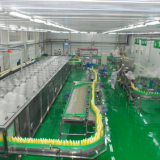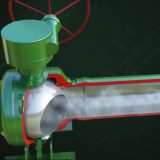In the valve industry, every person wants to buy a high-quality sanitary relief valve.
I’ve put together a list of some of the things you can do, and avoid, to properly prepare for your valves.

What is a sanitary relief valve?
Sanitary pressure relief valve that is now commonly used is first-grade throttling. The valve flap is cone-shaped. The pressure relief valve of first-grade throttling has a better effect on the low-pressure drop. But in the high-pressure drop, cavitation is prone to occur, leading to premature damage to the throttle. Usually, two or more pressure relief valves are used in parallel, increasing the operating cost of the system and its instability.
What are the types of Hydraulic Pressure Relief valves?
According to the structure of the pressure relief valve, they can be divided into:
Piston-type pressure relief valve: It uses the piston to balance pressure and drive the movement of the valve flap.
Membrane-type pressure relief valve: It uses membrane as a sensing element to drive the movement of the valve flap.
Air bag-type pressure relief valve: It uses the pressure produced by the medium entering the airbag to balance pressure.
How to select sanitary relief valves?
Several factors must be taken into account when selecting appropriate relief valves for an application. Here are some of them:
1. The size of the pipe in the system: This is of utmost importance because the size of the pipe will determine the size and even the type of pressure relief valve to be used in the piping system.
2. Setting pressure: This is crucial in determining the type of pressure relief valve for an application because; the differential pressure affects the sealing ability.
3. Temperature: This affects the material of the bodies of the various components of the piping system. The component materials used in high and low temperatures are different.
What is the mechanism of pressure relief valves?
There are many types of sanitary pressure relief valves. Piston type and spring film type are the main two types. Piston type pressure relief valve is a type of valve that uses a piston for pressure relief. Spring film-type pressure relief valve relies on spring and film for pressure balance.
When the pressure relief valve’s output pressure is high or the diameter is large, regulating the pressure using a regulator spring will make the stiffness of the spring too big. When flow changes, the output pressure has a big fluctuation, so the structural size of the sanitary valve will increase, too. In order to overcome these shortcomings, pilot-type pressure relief valves can be used.
What are the Pressure Testing Methods for Pressure Relief Valve?
The strength test of the pressure relief valve is usually for assembly after the test of the single piece, or for test after assembly. The duration of the strength test: 1 minute for DN<50mm; more than 2 minutes for DN65~150mm; more than 3 minutes for DN>150mm. After the bellows and the components are welded, apply 1.5 times the maximum pressure and use the air to perform the strength test.
After the inlet pressure is set, gradually adjust the regulating screw of the valve so that the outlet pressure can sensitively and continuously change within the range of maximum and minimum value without stagnation or jamming.
For more information, please visit http://www.adamantvalves.com/



